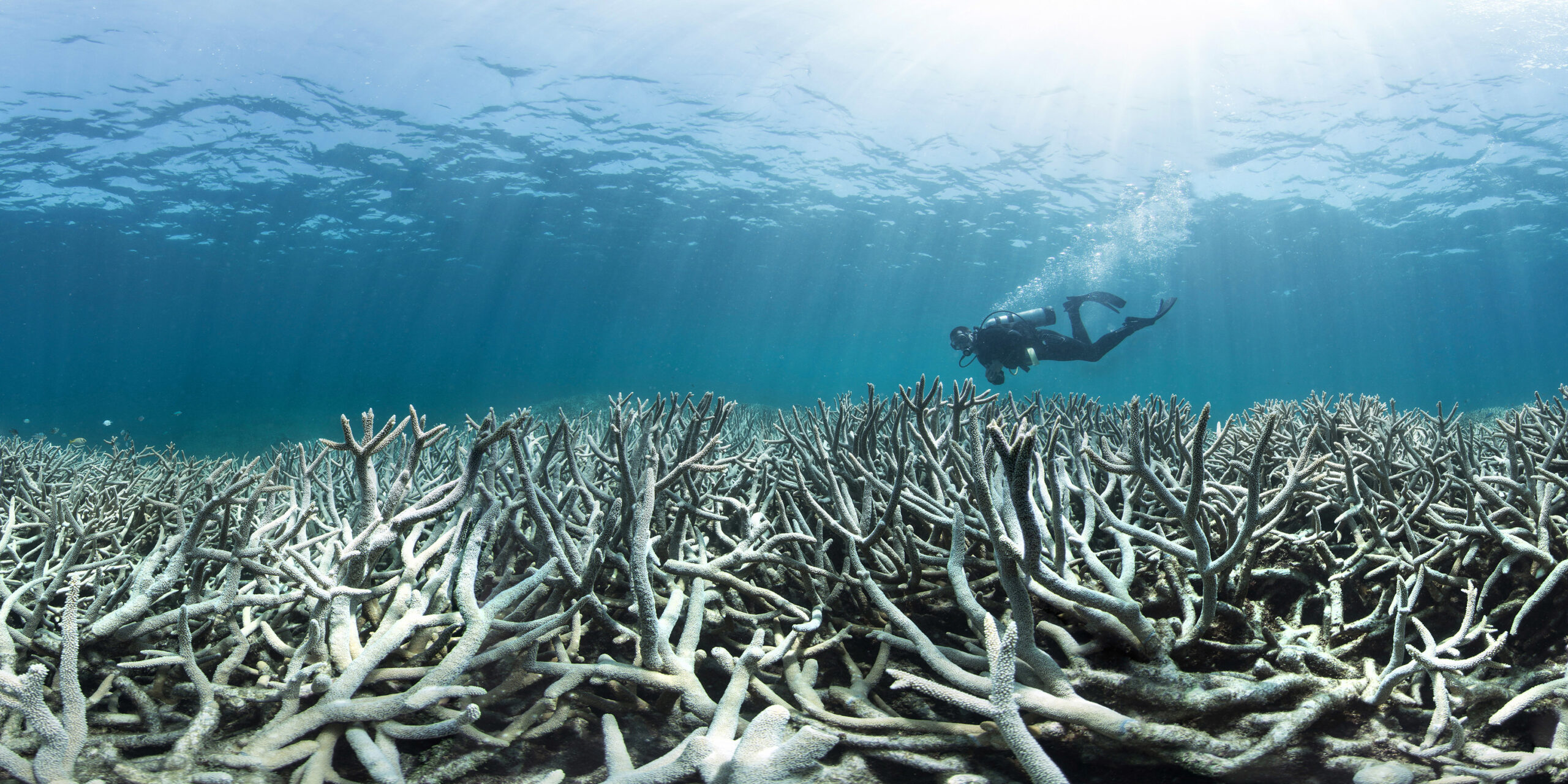Coral reefs are incredibly important and intricate ecosystems that are home to over 25% of marine life. While comprising just a small fraction of the world’s ocean floor, these bastions of biodiversity are home to over a million species of marine wildlife that each play a unique role in the reef. Coral reefs also provide structural integrity to coastlines, protecting them from harsh waves, flooding, and extreme weather events. Unfortunately, these critical habitats are sensitive to climate change and warming ocean temperatures.
Corals are invertebrates with a hard exoskeleton that depend on their symbiont, zooxanthellae algae, to survive. The algae, which emanate vibrant colors, use photosynthesis to create food for coral in exchange for housing. However, as ocean temperatures and pollution levels rise, the algae produce reactive, toxic chemicals. In retaliation, the coral expels the algae, despite the algae being coral’s major food source. Though coral may recover if conditions improve, many will eventually starve and leave behind a bleached, bone-white graveyard. This “coral bleaching” phenomenon, seen in the 2020 documentary, “Chasing Coral”, is visually and biologically devastating.

As mass bleaching events become increasingly common through climate change, scientists have put enormous effort into learning coral biology and developing new methods of strengthening and rebuilding coral reefs. To this end, researchers have made efforts towards improving reef resilience by gene-editing coral or cross-breeding species that live within the same reef but would normally not interact. Researchers have even used coral from the hottest reefs, such as species from the Persian/Arabian Gulf, to boost coral heat tolerance. By expanding reef biodiversity even further, scientists hope to improve the likelihood of more climate change-tolerant coral species emerging in the reefs.
Beyond improving reef resilience, scientists are also working towards rebuilding reefs and saving species from extinction. The Tampa Aquarium’s coral spawning lab, led by Dr. Keri O’Neil, has successfully spawned 14 different species of local coral that have been slowly disappearing from the Florida Keys. By propagating these endangered corals in the lab, researchers can transplant the coral back into the wild reefs and bolster their populations. The National Oceanic and Atmospheric Administration has similarly thrown its weight behind this cause, with a strategic plan to restore and protect coral reefs in Florida, Puerto Rico, and Hawaii.
While scientists are developing promising strategies that give hope to coral reefs, we must act to mitigate this process.
Peer editor: Bhavyaa Tyagi